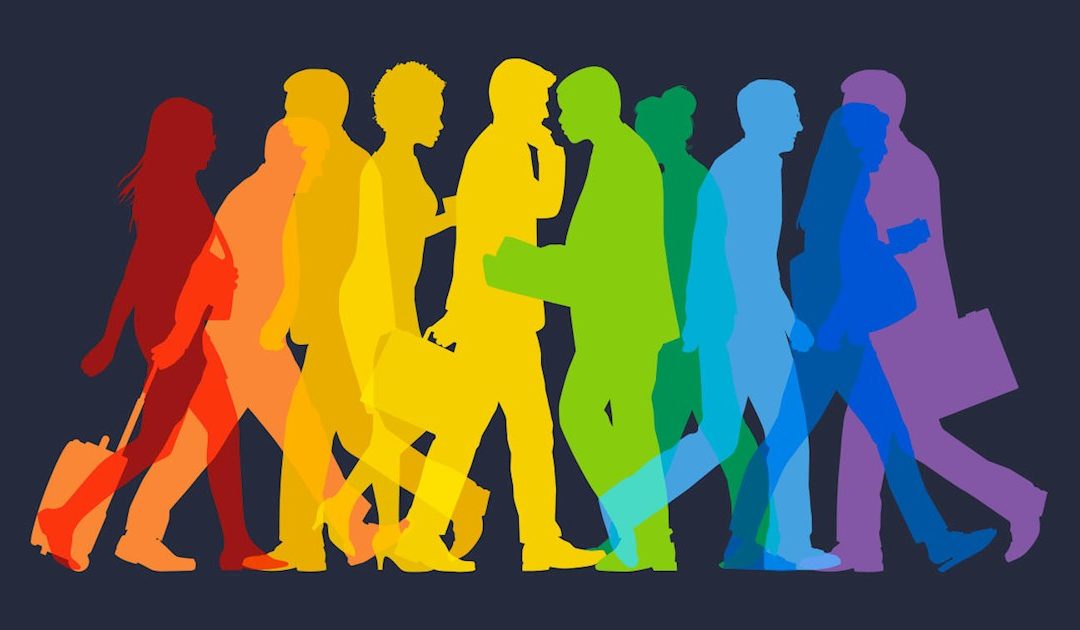We have heard a great deal recently about the need for “inclusive leadership” with specific emphasis on diversity issues. What does that mean exactly? How does a workplace support LGBTQ+ employees?
First, we should define what we mean by inclusive leadership. According to the site workable.com, inclusive leadership is:
Is this really relevant in work environments? Is inclusive leadership just the latest “politically-correct” idea that is being circulated in the business community? Are efforts to focus on inclusive leadership a waste of time?
Since I am writing a blog about this, you can likely guess that I am not about to convince you that these efforts are a waste. In fact, inclusive leadership and diversity issues are IMPORTANT FOR BUSINESS. By paying attention to diversity issues, organizations can be best prepared to adapt to customers, employees and ideas that represent a wider array of the human experience. Businesses that pay attention to diversity and inclusion efforts are better at retaining employees and do better financially.
I thought that Pride Month was a good time to write about how inclusive leaders can pay attention to members of the LGBTQ+ population, whether employees or customers. Here are my top three do’s and don’ts when it comes to members of the LGBTQ+ community:
Do:
- If you don’t know a great deal about LGBTQ+ history, educate yourself. Don’t look to colleagues or employees to do that for you. Go to a gay pride march. Read some educational materials. Watch a documentary such as the PBS documentary on Stonewall. You might also take my “Test your LGBTQ+ IQ” quiz. You may learn a few things! I certainly learned some things in putting this material together. After you take the quiz, be sure to check out my video that reviews the correct answers and supplemental material.
- Advocate for your workplace to be more inclusive of LGBTQ+ individuals. Be sure that your nondiscrimination policy mentions sexual orientation and gender identity. Make sure that all kinds of families are welcome at work functions. If you hear a joke or comment that is disrespectful, say something. Too often, homophobic or transphobic comments go unnoticed or unaddressed by those who are not the targets of these comments. Say something!
- People can be so afraid to say or do the “wrong” thing that they don’t say or do anything at all. Don’t get caught up in this spiral. Be courageous and find new ways to challenge yourself to relate to LGBTQ+ colleagues. Don’t worry about “making mistakes.” We can all make them. Learn from your errors and move on.
Don’t
- Don’t make assumptions about others. Don’t assume that if a colleague has come out to you that she/he is out to everyone in the office. Don’t assume that if someone is married, she/he is heterosexual. Don’t assume that all LGBTQ+ individuals have marriage as their relationship goal, just because it is legal.
- Let others come out to you when they are ready. Don’t ask questions that you would not like to be asked yourself. Once a co-worker comes out to you, don’t assume that it is now time to ask any question you have always wanted to ask someone in this community.
- Don’t always talk about gender or sexual orientation when you are around someone from the LGBTQ+ community. People are multi-faceted and have many sides to themselves. Be sure to relate to people as people, not as your “gay co-worker” to whom you should always mention gay issues or the latest Hollywood star to “come out.”
Thank you for taking the time to read this blog and consider ways to support your LGBTQ+ customers and employees. Stay curious about diversity issues. Being open to people from diverse backgrounds is good for you and for your business!

